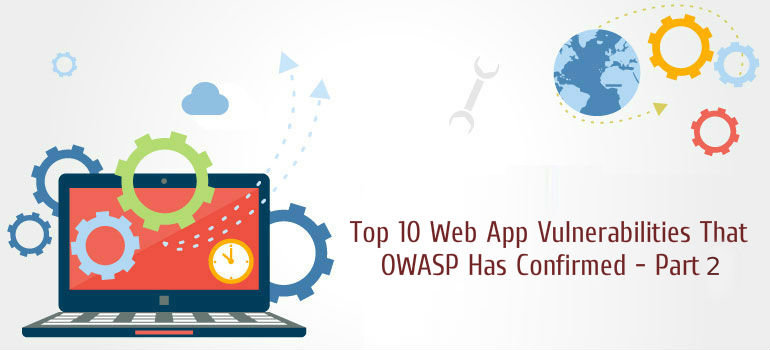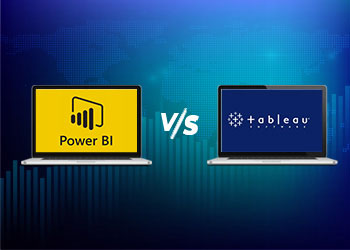
Today, app developers face diverse challenges than earlier. They have a wide array of databases to choose from, but only a few are suitable for their particular project.
It is important to differentiate between relevant technologies and not so essential ones. It is essential to build a software with the right combination.
In this article, we will discuss the following-
- Understanding SQL
- Understanding NoSQL
- Major Differences Between SQL and NoSQL
Understanding SQL
In simple terms, SQL databases are compatible with SQL language only. This is a domain specific language that can assist in manipulating data and querying in the relational database. In this context, relational databases are regarded as the relational model designed for data management.
The crux of the relational model is to extract data in a set of tuples structured into relations. This model enables actual extraction and representation of data and traces their journey.
SQL is not the only best language to implement queries over the relational model, it’s the most popular one.
Since the late 1970s, relational databases and SQL have been a part of the technology realm. This model is under active development but has certain limitations when it comes to the design.
New SQL and Distributed SQL
In the early 2010s, several issues came to light related to database handling. A couple of firms started building relational/SQL-based systems that can help resolve problems with respect to horizontal scalability.
This resulted in to two different paths-
- New SQL-The new SQL utilizes the current relational database and coat-distributed logic on top, which provides different levels of transparency to the user. Vitess and Citus are two exceptional examples of New SQL.
- Distributed SQL- These systems follow a ground-up approach to build horizontally measurable relational engines. Google’s Spanner and CockroachDB are ideal examples of this. These engines have higher capabilities than New SQL counterparts.
Understanding NoSQL
Often, freshers and other individuals associate NoSQL databases with non-relational databases. A few individuals termed it to be non SQL while others deemed it to be not only SQL. Ideally, NoSQL databases are databases that can retain information in varied formats. For example, data that is not restricted to tables and tuples, i.e semi-structured data can be an apt choice for NoSQL.
It is also wrongly interpreted that NoSQL databases don’t save relationship data properly. They do store relationship data but in a different manner than how the relational databases do.
It is also observed that several developers find modelling relationship data in NoSQL to be more convenient than the SQL database. The main reason for this is that NoSQL data is not distinguished among different tables.
NoSQL data model enables related data to be combined under a single data structure.
Towards the late 2000s, there was a surge in the use of NoSQL databases as the storage cost decreased drastically. Businesses no longer had to implement and use difficult-to-manage and complex data models.
Instead, they can simply utilize NoSQL and can reduce the chances of data duplication. Developers became the primary asset of the software development process and NoSQL optimized their efficiency.
Major Differences Between SQL and NoSQL
In this section, we have discussed differences between SQL and NoSQL-
Data Storage Model
SQL databases have static rows and columns in their tables. This rigidity sometimes makes it difficult to store data and has a negative impact on business growth. NoSQL utilizes JSON documents with key value pairs, wide columns and rows. This database also possesses edges and nodes with dynamic columns.
Fundamental Purpose
SQL database has a general purpose. Alongside the general purpose, NoSQL also offers huge amounts of data with potential query patterns, massive data with simple lookup queries, wide-columns, and graphs.
NoSQL database also helps analyze, track, and connect data and align them.
History
SQL was developed in the late 1970s with an aim to reduce data duplication. NoSQL was developed in the late 2000s and the focus was to scale and enable smooth changes in the application. It has the ability to handle semi-structured and unstructured data that cannot be handled by SQL.
These rapid changes were implied prominently with the help of DevOps and agile practices.
Scaling and Schemas
NoSQL follows a horizontal scaling pattern where it measures different commodity servers. SQL utilizes a vertical scaling pattern with a larger server.
NoSQL has a flexible schema, while SQL has a rigid one.
Data to Object Mapping
SQL needs object-relational mapping (ORM), while in NOSQL databases ORMs are not mandatory. MongoDB documents find their way to the data structure with the help of well-known programming languages.
Multi-Record ACID Transactions
In NoSQL, most of them don’t support these transactions. However, there are some such as MongoDB that support multi-record ACIS transactions. In SQL, multi-record ACID transactions are well-supported.
The best examples of NoSQL are CouchDB, MongoDB, DynamoDB, Redis, and Amazon Neptune to name a few. Some renowned examples of SQL comprise Microsoft SQL server, Oracle, MySQL, and PostgreSQL among others.
When to Use Which
When you are in search of data integrity, reliable relational databases, then SQL is the best solution. Besides, when you don’t need additional and exceptional abilities, then SQL is your go-to option.
NoSQL is interesting when you have to work with highly-flexible data models. This database has the ability to suffice precise requirements that is unlikely to be fulfilled with the relational model.
If you deal with several unstructured data, then document databases like CouchDB and MongoDB to name a few are the best fit. If you need fast access to key-value data and can adjust on integrity, then Redis is an ideal fit.
NoSQL is a good choice when you need to handle flexible or complex search across massive data.
With changing business needs, new intuitive technologies are constantly introduced to enhance software capabilities. SQL and NoSQL databases also experience a transition with intelligent technologies.
Learn more about which database would be a best-fit from a qualified team at Brainvire. Connect with us to deliver speed-to-market business outcomes.
Related Articles
-
Steps to develop & Market A Successful Mobile Application
Today, almost every business developing mobile applications to get a ride of m-commerce. If some one is really capable of creating an app or hire someone to do so, still
-
Top 10 Web App Vulnerabilities That OWASP Has Confirmed – 2
A lot has already been explained about OWASP testing from the ground up in the first series. It has alleviated the need to explain it once more. In the previous
-
Power BI VS Tableau: Who’s the Winner?
Data is the clandestine tool for almost every business. Appropriate interpretation of data can help discover the right business capabilities. You no longer enter random passcodes instead, enter the right



